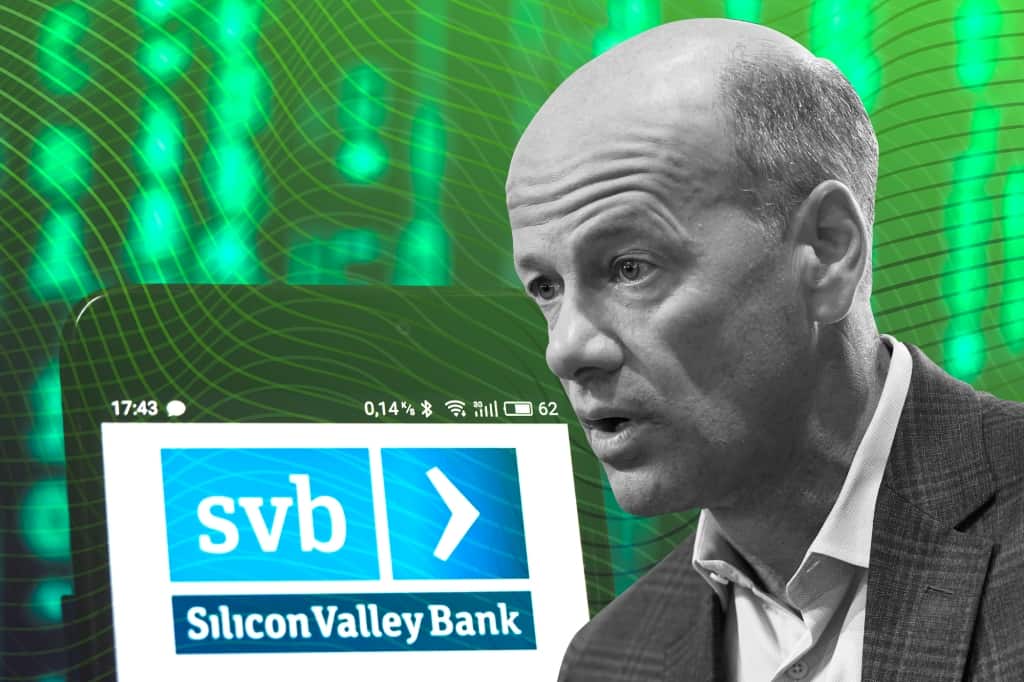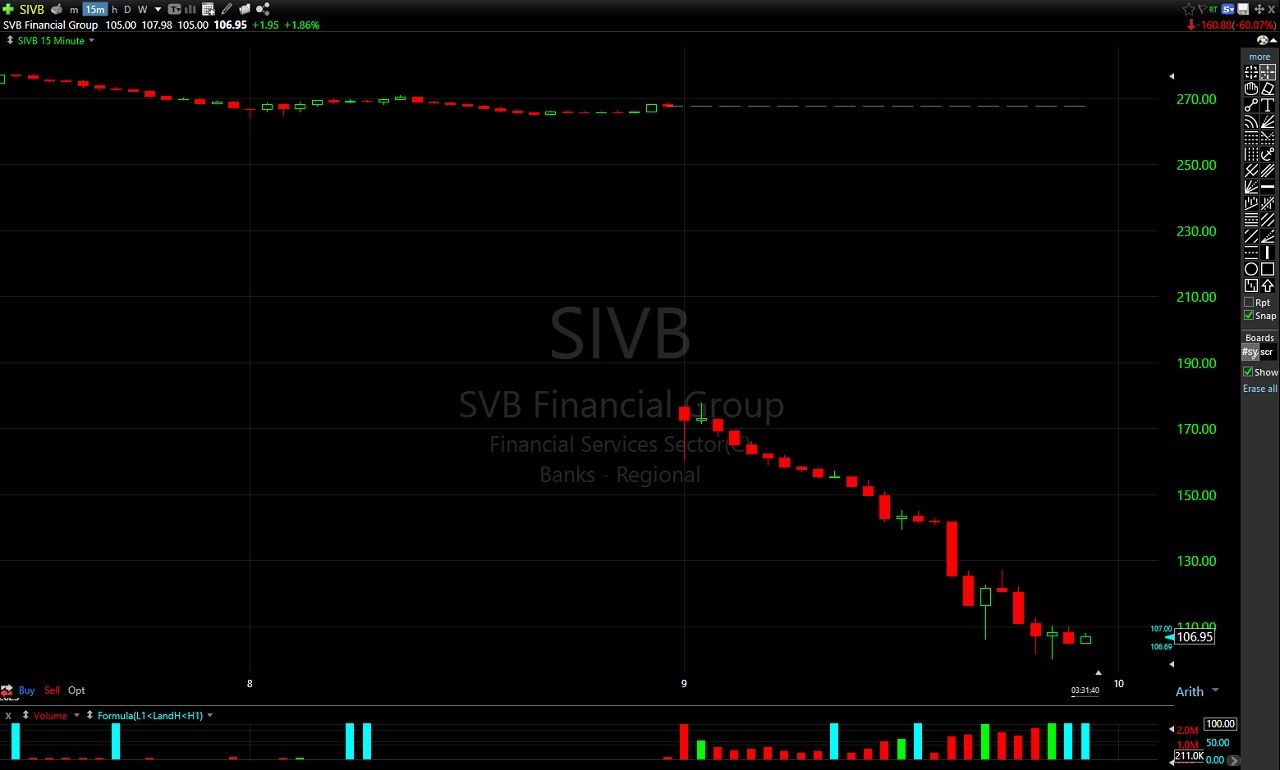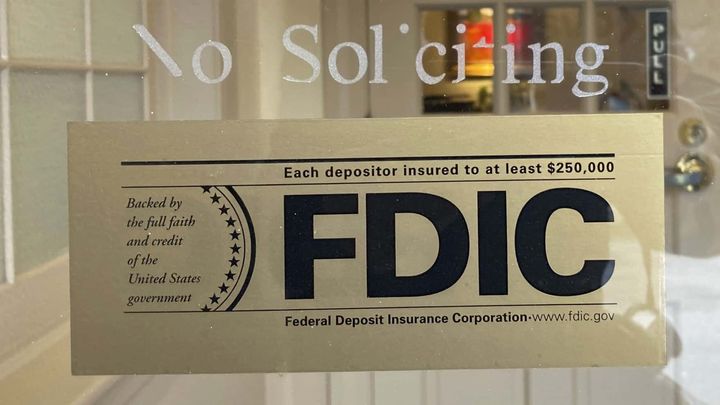The Impact of Greg Becker on Silicon Valley Bank
Follow the career journey of Greg Becker from tech startup executive to CEO of Silicon Valley Bank and discover how his leadership has shaped the company. The rise and fall of Greg Becker and SVB

Follow the career journey of Greg Becker from tech startup executive to CEO of Silicon Valley Bank. Learn about his leadership style and how it helped shape Silicon Valley Bank into a successful financial institution and the unfortunate and ugly fall.
- Stablecoin USDC breaks dollar peg after firm reveals it has $3.3 billion in SVB exposure.
- Silicon Valley Bank employees received their annual bonuses Friday just hours before regulators seized the failing bank, according to people with knowledge of the payments.
- Silvergate and Silicon Valley Bank show the risks of banks concentrating in one area
Early Life and Background
Greg Becker was born in Bozeman, Montana, on November 19, 1959. He grew up with six children and attended Bozeman High School. After graduating high school, Becker attended Montana State University, earning a Bachelor's in Business Administration in 1981.
After graduating from Montana State, Becker began his career in banking, working for various financial institutions in the Pacific Northwest. In 1983, he joined Wells Fargo, working as a commercial banker for ten years before moving to Silicon Valley Bank in 1993.
Becker's banking experience and familiarity with the technology industry made him a natural fit for Silicon Valley Bank, which was rapidly becoming one of the leading banks serving the technology and innovation sectors. After joining the bank as a banker in the Palo Alto office, Becker quickly rose, eventually becoming CEO in 2011.
Throughout his career, Becker has been recognized for his leadership and expertise in banking and finance. In 2019, he was named one of the 100 most influential people in finance by Barron's, and he has been a frequent speaker and commentator on topics related to innovation, entrepreneurship, and finance.
Greg Becker's Background in Tech Startups
Greg Becker has an impressive background as a tech startup executive, having served in several senior positions before becoming the President of Silicon Valley Bank. His experience with some of the world’s most innovative startups is invaluable, and his leadership has been critical to the growth and success of the company. Through his focus on digital banking solutions and strategic partnerships, he has been able to expand Silicon Valley Bank’s global reach into new markets while also ensuring they stay resilient through any economic downturns.

Becoming CEO of Silicon Valley Bank
In March 2018, Greg Becker was appointed as the CEO of Silicon Valley Bank. At this point, he had already served 7 years as President of the bank and used that tenure to position the company for success under his leadership. During this time, he focused on strengthening long-term partnerships with global companies, expanding technology capabilities and launching innovative digital banking solutions that are helping to drive the next wave of economic growth in Silicon Valley.
Silicon Valley Bank Under Becker's Leadership
Under Becker’s tenure as CEO, Silicon Valley Bank has been transformed into a thriving financial institution. He has expanded the bank’s customer base to include global customers, restructured its technology capabilities, created innovative digital banking solutions and developed unique financing structures for companies across the globe. Leveraging his strong network of relationships in the tech and venture capital communities, he successfully drove collaboration throughout Silicon Valley Bank's business lines to make it an industry leader.
Strengthening Financial Inclusion and Community Engagement
Greg Becker has been committed to providing underserved populations with access to banking and financial services. He has developed initiatives such as Silicon Valley Bank’s signature “Entrepreneur in Residence” program, which provides a platform for current and aspiring entrepreneurs of diverse backgrounds to access resources, training and mentoring that can help them grow their businesses. Under Becker’s leadership, Silicon Valley Bank has also created a number of partnerships across the education, finance and technology sectors to bring even more value to their clients.
Michael Burry blamed the crisis on "hubris and greed."
A recent crisis related to the collapse of Silicon Valley Bank (SVB) in California has caused concern about the stability of the banking system and the wider financial crisis. The cause of the SVB collapse is attributed to a combination of a highly concentrated deposit base and large unrealized losses on Treasuries and mortgage bonds. Investor Michael Burry blamed the crisis on "hubris and greed." The failure of SVB has also led to investors flocking to bonds as a haven, causing yields to post their biggest drop since 2008.
Leading the Way in Sustainable Banking Practices
From reducing the usage of paper to increase energy and water efficiency, Greg Becker has led Silicon Valley Bank to become a leader in sustainable banking practices. Under his leadership, the bank has implemented several green initiatives including partnering with TreeVolution, a program that supplies corporate clients with funds for planting trees throughout California. In addition, Silicon Valley Bank is also working on strengthening its presence in underserved communities by providing increased support and access to vital financial services.
Collapse in 48 hours
Silicon Valley Bank (SVB) collapsed in 48 hours due to higher interest rates, dwindling venture capital, and a recent meltdown in the tech sector. SVB's clients began pulling money out of the bank as they faced these challenges. The bank was short on capital and had been forced to sell all its available-for-sale bonds at a loss. SVB's parent company, SVB Financial Group, took a $1.8 billion hit from the $21 billion fire sale of its bond holdings.
The panic induced by the venture capital community SVB had served and nurtured also played a role in the bank's collapse. VC community members lament the role that other investors played in SVB's demise. The failure could have significant ramifications on the startup and tech sectors. Regulators were forced to shut down SVB to protect its depositors after a run on the bank ensued this week. Investors scrambled to withdraw their money following warnings from Peter Thiel's Founders Fund. Silicon Valley Bank is now under the control of the US Federal Deposit Insurance Corporation after it could not pay back customers that withdrew their deposits.
The Fall
Silicon Valley Bank (SVB) collapsed due to balance sheet management errors and rising interest rates. SVB put too much money into long-term bonds, which became problematic when interest rates surged. In addition, the US Federal Reserve raising interest rates caused the market for initial public offerings to shut down for many startups and made private fundraising more costly, causing some SVB clients to pull their money out to meet their liquidity needs. This culminated in SVB seeking to fill its funding hole through a capital raise. SVB announced it would sell $2.25 billion in common equity and preferred convertible stock to fill its funding hole.

However, some SVB clients pulled their money from the bank on the advice of venture capital firms such as Peter Thiel’s Founders Fund, spooking investors such as General Atlantic that SVB had lined up for the stock sale. The plunge in the value of bonds that SVB bought up during boom times when it had a lot of customer deposits also contributed to its downfall. As customers faced leaner times, they pulled their money from the bank, creating financial stress for SVB. The collapse of Silicon Valley Bank has raised uncomfortable questions about whether it will undermine the broader banking system and start a new meltdown. Billionaire hedge fund manager Bill Ackman has compared SVB to Bear Stearns, the first lender to collapse at the start of the 2007-2008 global financial crisis.
Greg sold stock in February 2023
Greg Becker is the CEO of Silicon Valley Bank (SVB) and sold $3.6 million worth of company stock under a trading plan less than two weeks before the firm disclosed extensive losses that led to its failure. The sale of 12,451 shares on February 27, 2023, was the first time in more than a year that Becker had sold shares in parent company SVB Financial Group. He filed the plan that allowed him to sell the shares on January 26, 2023. Becker exercised stock options and immediately sold the stock on February 27, netting him $2.27 million in personal profits.
On Friday, March 10, 2023, Silicon Valley Bank failed after a week of tumult fueled by a letter the firm sent to shareholders that it would try to raise more than $2 billion in the capital after taking losses. SVB disclosed it had taken a $1.8 billion hit from a $21 billion fire sale of its bond holdings due to surging interest rates, and a recent meltdown in the tech sector led many customers to pare their deposits. The collapse cost outside investors billions and sent shock waves through the banking sector and Silicon Valley, where the bank was a significant lender to start-ups and venture capital firms.

How did FED decision impact SVB?
The collapse of Silicon Valley Bank (SVB) was due to a failure to communicate and the Federal Reserve's rate hikes. SVB's bond portfolio lost tremendous value because the Fed rapidly raised interest rates, but the bank failed to communicate that to investors. The collapse of SVB created concerns about the effects of higher interest rates on the economy and lowered global stock markets. The failure sent shockwaves across the banking industry, hammering shares of other smaller and regional lenders. The closure of SVB will further impact the tech world and is spurring additional concerns for banks. In addition, the Federal Reserve's rising interest rates hit silicon Valley Bank hard, making it highly susceptible to damage from rate hikes. More than 93 percent of the $161 billion deposited at Silicon Valley Bank is not insured by the FDIC, according to a Bloomberg News analysis.
In conclusion, SVB's failure was due to a combination of factors, including poor communication and rapid interest rate hikes by the Federal Reserve. The collapse of SVB created concerns about the effects of higher interest rates on the economy and lowered global stock markets.
Immediate effects on the economy
The collapse of Silicon Valley Bank (SVB) has caused a mad scramble and fears among companies with finances entwined with SVB in some way, including loans and cash sweep accounts. Due to its failure, companies that don't directly bank at SVB could face obstacles to paying employees. The acute phase of SVB's crisis began when it sold a significant portion of its securities at a loss of about $1.8 billion after-tax to ensure it could cover. One tech founder based in Los Angeles moved money out of SVB as soon as he heard about the stock drop and was able to recover 85% of his company's funds. The failure of SVB reveals stresses created by the fastest jump in borrowing costs in decades, but most analysts say the implosion of SVB appears company-specific for now.
Billionaire hedge fund manager Bill Ackman has compared SVB to Bear Stearns, the first lender to collapse at the start of the 2007-2008 global financial crisis. However, worries persist about further unintended consequences. Trading in the stock was halted Friday amid reports that the bank, unable to raise all the money it needed, was hunting for a buyer.
SVB under FDIC Control
On March 10, 2023, Silicon Valley Bank (SVB) was closed by the California Department of Financial Protection and Innovation and put under the control of the FDIC. The FDIC took control of the bank via a new entity called the Deposit Insurance National Bank of Santa Clara. SVB's deposits have been transferred to this new bank, and insured depositors will have access to their deposits no later than Monday morning. SVB's branch offices will also reopen under the regulator's control at that time.
According to the press release, SVB's official checks will continue to clear. The FDIC's standard insurance covers up to $250,000 per depositor, per bank, for each account ownership category. The FDIC said uninsured depositors would get receivership certificates for their balances. In addition, the regulator said it would pay uninsured depositors an advanced dividend within the next week.
SVB is focused on lending to start-ups, and its closure would impact deposits, credit facilities, and other forms of financing. Loan customers of SVB should continue to make their payments as usual. If you or your company provided a service or product, leased space, furniture, or equipment to Silicon Valley Bank before March 10, 2023, and have not been paid, you may have a claim against Silicon Valley Bank.
The Federal Deposit Insurance Corporation (FDIC) is an independent agency of the United States government that provides deposit insurance guaranteeing the safety of a depositor's accounts in member banks up to $250,000 for each deposit ownership category in each insured bank. To contact the FDIC: Call toll-free: 1-877-ASK-FDIC (1-877-275-3342). Hearing impaired line: 1-800-925-4618. Read more about FDIC insurance online at: www.fdic.gov/deposit/deposits.
Understand risk when trading.


